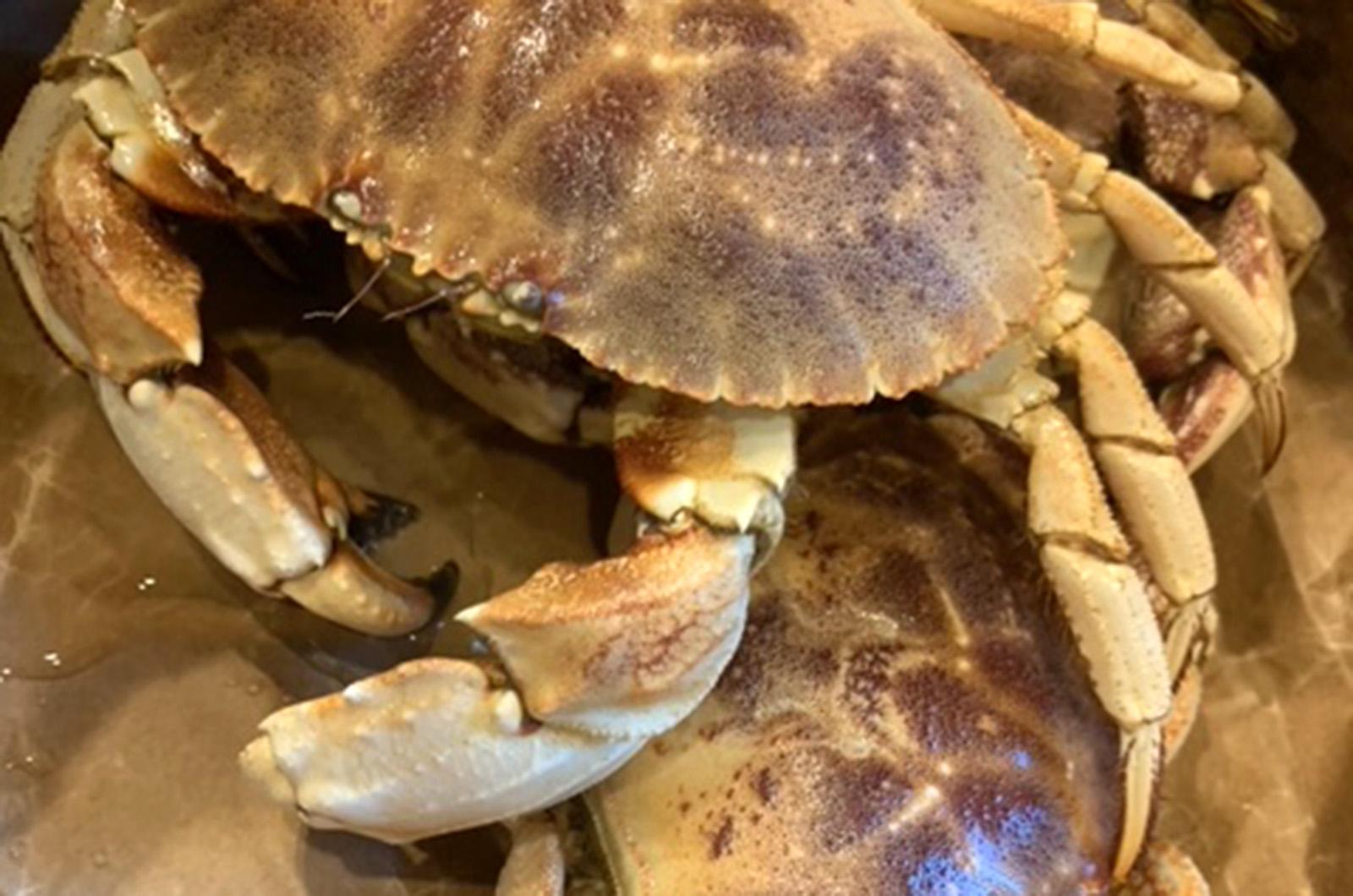Jonah was on the run.
As the story goes, the prophet boarded a ship to get as far away as possible from the city of Nineveh, where God commanded him to go and preach. In anger, God sent a storm to threaten the ship. His shipmates decided that Jonah was to blame for the storm and threw him overboard. We know where he ended up. It was a whale of a tale.
For mariners, Jonah’s name became synonymous with bad luck.
In more modern times, bad luck for lobster fisherfolk meant that they found a certain crab in their lobster pots, one that ate their bait before a lobster could get it, leaving the trap empty and, them, empty handed. That crab was called a Jonah crab because at one time it was a nuisance for participants in this fishery, an unfortunate and unprofitable catch.
Oh, how times have changed. Jonah crabs have gone from pest to plate and are an up-and-coming trash to treasure species. At one time, these crabs were considered bycatch and often thrown back or discarded.
Now, the crab castoffs have become somewhat of a culinary craze. Jonah crabs provide another option for those in the lobster fishery. And they are oh so local, being primarily fished in New England with most landed in Massachusetts, Maine, New Jersey and Rhode Island. Last weekend, we scored some crabs caught by the F/V Little Feet and purchased at the Martha’s Vineyard Seafood Collaborative’s booth at the West Tisbury Farmers’ Market.
These crabs, Cancer borealis, are sizeable, harvested when their carapace width is minimally 4.75 inches. Males are mostly harvested, as the females are smaller and regulations don’t allow the take of gravid (egg-bearing) crabs. The popularity of this fishery has grown quickly and, in 2022, Jonah crabs were the fifth most valuable fishery in Massachusetts.
It is no wonder why they have gotten so popular. The meat of this crab is very sweet, not surprising since their diet is mostly blue mussels and snails — both delicious. In one study of crab stomach contents, 50 per cent of the content of crab bellies were blue mussels. Getting their meat can be a challenge, since Jonah crabs are known for their very hard shells, and in some cases, hammers are recommended to crack their characteristic dark-tipped claws.
Dinner is not Jonah crabs’ only vocation. They serve as a food source for birds, especially gulls, that will drop them from heights onto hard surfaces to break them apart. Also, anglers will use these crabs for bait for tautog fishing. Calling them white leggers, the saying goes, “legs of white, tog will bite.”
Of course, Jonah crabs are fascinating creature of their own accord. Like all crabs, they grow by molting, also called ecdysis. Once adults, reproduction occurs with a copulatory embrace after which females will hold sperm indefinitely.
She has one clutch of up to a million eggs per year and can have up to five broods in her lifetime. Her young will be brooded for five to six months, then will become planktonic, free floating zoea until they settle in the subtidal zone as a larva, which is called a megalopa. Finally, they molt into a juvenile that we would recognize as a crab.
Jonah crabs can be harvested year-round; they are often landed in late winter and early spring, so a summer crab feast was a happy happening. Jonah crabs may have been considered an unhappy catch at one time, but clearly the tide has turned. While those caught crabs that ended up on our plate were not fortunate, the fishers that landed them—and we that ate them—were so very lucky.
Suzan Bellincampi is director of the Felix Neck Wildlife Sanctuary in Edgartown, and author of Martha’s Vineyard: A Field Guide to Island Nature and The Nature of Martha’s Vineyard.







Comments
Comment policy »